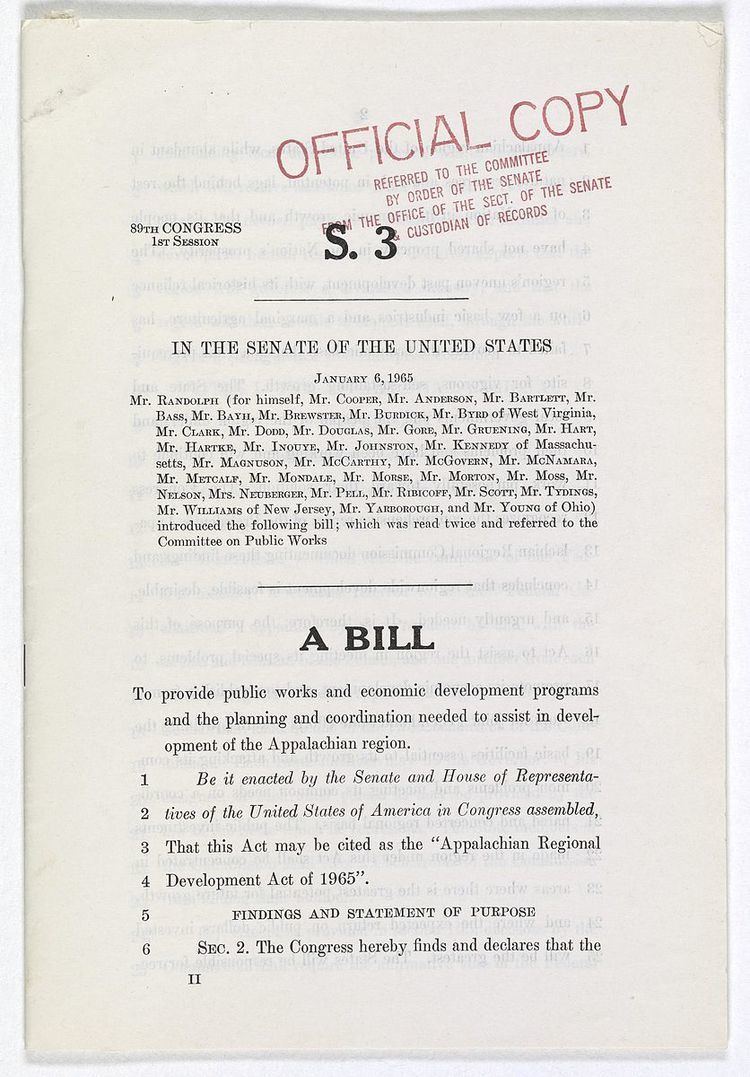 | ||
The Appalachian Regional Development Act of 1965 established the Appalachian Regional Commission (ARC), which was tasked with overseeing economic development programs in the Appalachia region, as well as the construction of the Appalachian Highway Development System. Membership included representatives from New York, Pennsylvania, Ohio, Maryland, West Virginia, Virginia, Kentucky, Tennessee, North Carolina, South Carolina, Georgia, Alabama, and Mississippi, as well as one federal appointee.
History
In the 1960s, one in three Appalachians lived in poverty. Per capita income in the Appalachian region was 23 percent lower than the U.S. average, and high unemployment forced millions to seek work outside the region.
In 1963, President John F. Kennedy created the President's Appalachian Regional Commission (PARC). President Lyndon B. Johnson used a PARC report as a basis for legislation. In 1964, he sent a request to Congress to send special aid to the economically depressed region as part of the War on Poverty. The Senate passed a bill close to the president's request, but the House failed to pass a bill before the 88th Congress adjourned.
In 1965, Senator Jennings Randolph (D-WV) introduced an administration-backed Appalachian aid bill (S.3) calling for more than $1 billion in federal assistance to the region. The Public Works Committee reported the bill to the Senate on January 27, 1965, and the Senate passed the bill on February 1, 1965, with a vote of 62-22.
The House of Representatives reported the bill on February 17, 1965, and passed the House with a 257-165 roll call vote on March 3, 1965. President Johnson signed the Appalachian Regional Development Act of 1965 into law on March 9, 1965.
